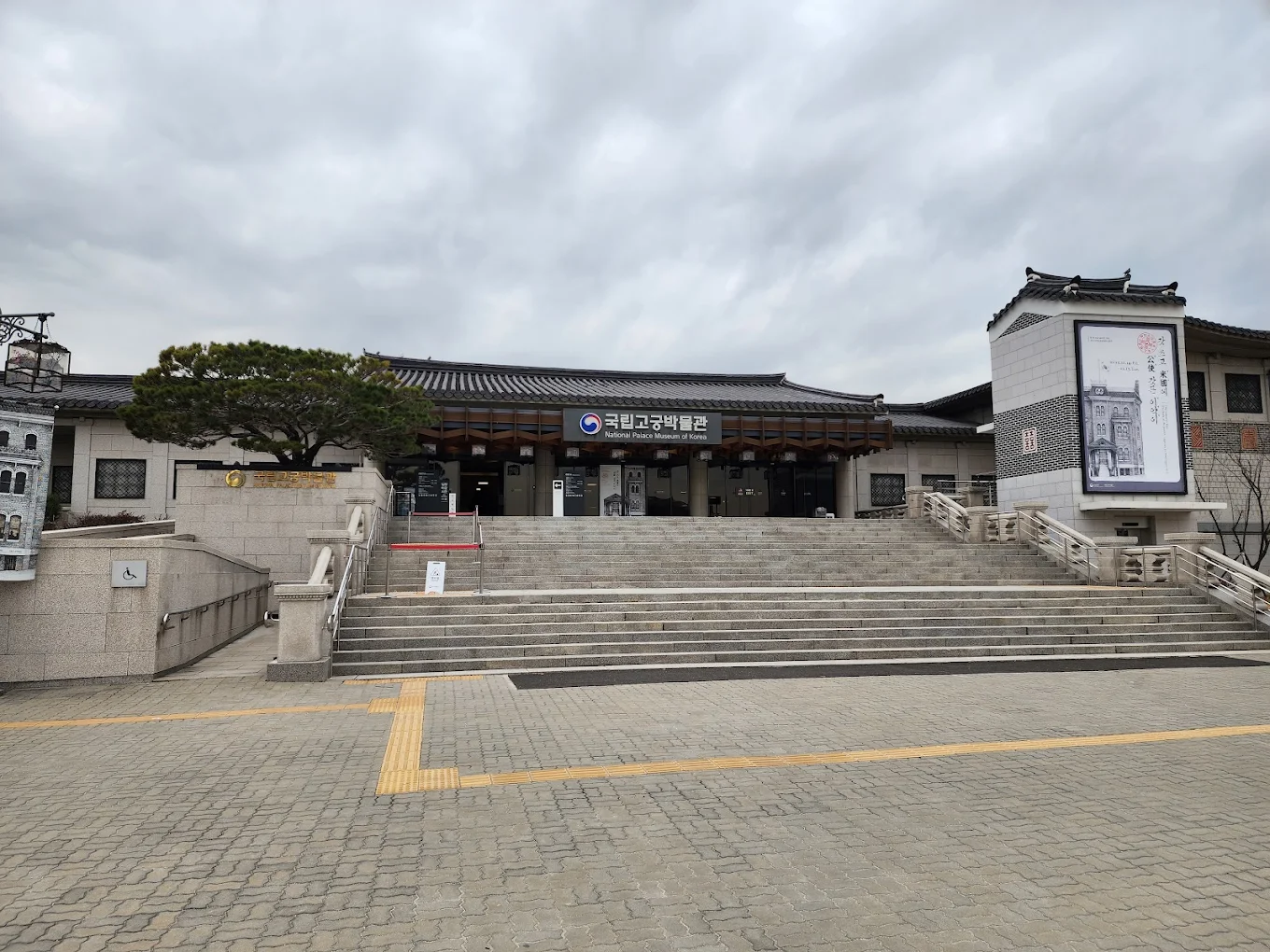I discovered this hidden gem inside Gyeongbokgung Palace – the National Palace Museum of Korea completely changed how I view Korean royal history.
Located within Gyeongbokgung Palace in Seoul, this museum houses Korea’s most precious royal artifacts. Unlike the larger National Museum of Korea in Yongsan, this focuses exclusively on Joseon Dynasty treasures and court culture.
Entrance Fees & Tickets
Museum: FREE! But you need a Gyeongbokgung Palace ticket first.
Palace Entry:
- Adults: 3,000 won
- Students: 1,500 won
- Kids under 6: Free
Pro tip: Get the combined palace pass (5,000 won) covering 4 palaces + Jongmyo – valid 3 months!
Hours & Best Times
Museum Hours: 9 AM – 6 PM (closed Mondays) Palace Hours: 9 AM – 5/6 PM (varies by season)
Visit early morning (9-11 AM) or late afternoon for fewer crowds. Weekdays are much quieter.
Must-See Exhibits
Ground Floor: Royal costumes with incredible gold embroidery – actual hanbok worn by queens!
Second Floor: Royal furniture and dining sets. The mother-of-pearl lacquerware is breathtaking.
Third Floor: Ancient Korean scientific instruments, including rain gauges invented 200 years before Europe!
My favorites: Royal seals collection and the queen’s delicate jewelry that shows Korean court refinement.
My Experience
I planned 30 minutes but stayed 3 hours! Seeing actual items Korean kings used daily made history feel alive. The English descriptions are excellent, and the intimate size means you can appreciate every piece without rushing.
The museum transformed my understanding of Korean royal culture. These aren’t replicas – they’re real treasures from Korea’s royal past.
Many people might prefer to travel around Seoul and see the temples here. Here you can visit and see the 10 famous temples of Seoul that are very close to you.
Reviews & Comparisons
Visitors consistently praise:
- Excellent English explanations
- World-class artifacts in perfect condition
- Free entry with palace ticket
- Air-conditioned comfort
vs National Museum of Korea:
- Palace Museum: Royal-focused, intimate, free with palace
- National Museum: All Korean history, massive, separate fee
For Korean royal culture specifically, Palace Museum wins.
Practical Tips
- Visit museum first, then explore palace with better context
- Photos allowed in most areas
- Free lockers available
- Combine with palace guard ceremony
- Allow 2-3 hours total
- Download Gyeongbokgung app for extra info
Why Visit?
This offers Korea’s most authentic royal experience. You’re seeing actual possessions of Korean kings and queens, understanding their sophisticated daily lives beyond modern K-culture.
Perfect for deeper cultural understanding with museum-quality treasures you won’t find elsewhere.
My rating: 9/10
Location: Inside Gyeongbokgung Palace, Seoul Access: Gyeongbokgung Station (Line 3), Exit 5 Cost: Free (palace entry required)

